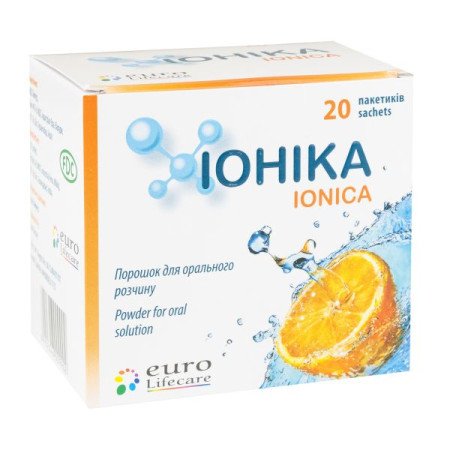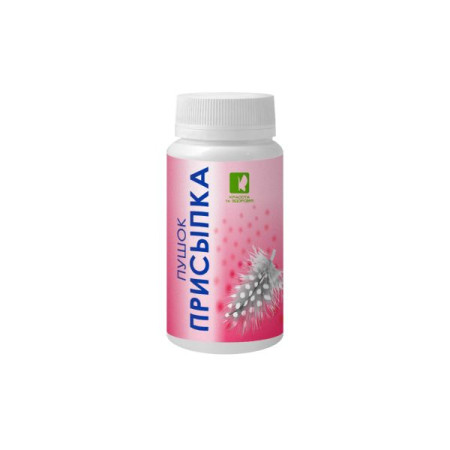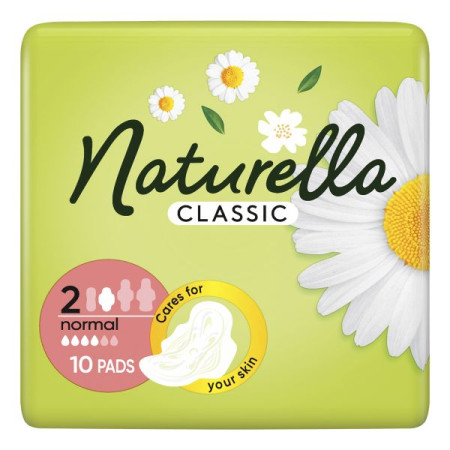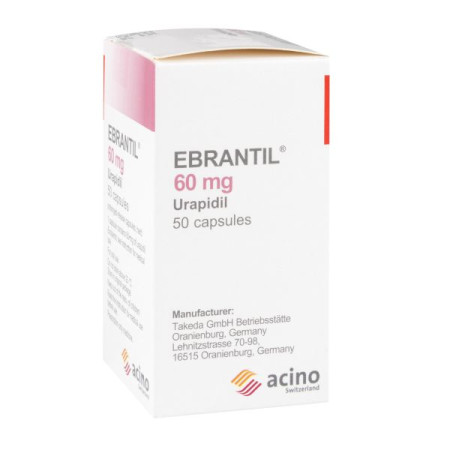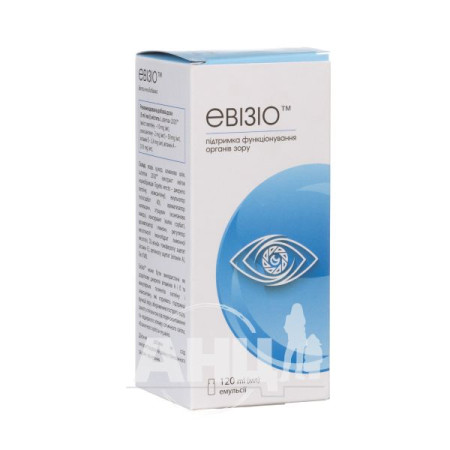Opipram film-coated tablets 50 mg No. 30

Instructions for Opipram film-coated tablets 50 mg No. 30
Composition
active ingredient: opipramol dihydrochloride;
1 film-coated tablet contains 50 mg of opipramol dihydrochloride;
Excipients: pregelatinized starch, microcrystalline cellulose, colloidal anhydrous silica, magnesium stearate, macrogol 6000, hypromellose, talc, titanium dioxide (E 171), iron oxide yellow (E 172).
Dosage form
Film-coated tablets.
Main physicochemical properties: round tablets, film-coated, yellow-brown in color.
Pharmacotherapeutic group
Agents acting on the nervous system. Nonselective monoamine reuptake inhibitors. ATC code N06A A05.
Pharmacological properties
Pharmacodynamics.
Mechanism of action
Opipramol is a sigma ligand, has high affinity for sigma receptor binding sites (type 1 and type 2) and is an antagonist at histamine H1 receptors. Affinity for 5-HT2A serotonin receptors, D2 dopamine receptors and α-adrenergic receptors is negligible. Unlike structurally related tricyclic antidepressants, opipramol has little anticholinergic activity and does not inhibit serotonin or norepinephrine reuptake. Enhances dopamine reuptake.
Opipramol demonstrates a modulatory effect on the NMDA receptor system via sigma receptors, and has been shown to protect against ischemia-induced hippocampal neuronal loss in an experimental setting.
The modulatory effects of sigma ligands have been similarly described for the serotonergic and noradrenergic systems. Opipramol, like the more selective sigma ligands, exhibits effects in behavioral pharmacological models indicating a reduction in anxiety, and has comparatively less activity in the rat swim test, a method for testing potential antidepressants.
In humans, opipramol has sedative, anxiolytic, and moderate thymoanaleptic effects.
Pharmacokinetics.
Absorption
After oral administration, opipramol is rapidly and completely absorbed. During passage through the liver, partial metabolism occurs to dehydroxyethyl-opipramol. Plasma protein binding is about 91%, the volume of distribution of the drug is about 10 l/kg. The elimination half-life (T½) is about 11 hours.
After a single oral dose of 50 mg of opipramol, the maximum plasma concentration is reached after 3.3 hours and is 15.6 ng/ml.
After a single oral dose of 100 mg of opipramol, the maximum plasma concentration is reached after 3 hours and is 33.2 ng/ml.
Metabolism
Opipramol is metabolized mainly by the CYP2D6 isoenzyme. In patients with CYP2D6 deficiency ("poor metabolizers"), the maximum concentration of opipramol in the blood plasma can be up to 2.5 times higher than in individuals with normal metabolism. The t½ of opipramol does not increase with prolonged administration, so accumulation is not expected even in "poor metabolizers".
Breeding
More than 70% of the active substance is excreted through the kidneys, of which up to 10% is unchanged. The rest is excreted in the feces.
In patients with impaired renal function, a dose reduction may be necessary.
Indication
Generalized anxiety disorder. Somatoform disorders.
Contraindication
Hypersensitivity to the active substance or to other components of the drug; acute poisoning with alcohol, hypnotics, analgesics and psychotropic drugs; acute urinary retention; acute delirium; untreated angle-closure glaucoma; prostatic hypertrophy with residual urine; paralytic intestinal obstruction; previous higher-degree atrioventricular blocks or diffuse supraventricular or ventricular conduction disorders; simultaneous use with monoamine oxidase inhibitors (MAOIs).
Interaction with other medicinal products and other types of interactions
Caution should be exercised when used concomitantly with neuroleptics, hypnotics and tranquilizers (e.g. barbiturates, benzodiazepines) as the combined use may potentiate the central depressant effects. The same applies to sedation after the use of systemic anesthetics.
The effects of potent anticholinergics such as antiparkinsonian drugs and phenothiazines may be enhanced.
Concomitant use of serotonin reuptake inhibitors and opipramol may cause an additive effect on the serotonergic system. Fluoxetine and fluvoxamine may increase the plasma concentration of tricyclic psychotropic drugs, which may increase adverse reactions. If necessary, the dose of opipramol should be reduced.
Combination with alcohol may cause drowsiness.
Concomitant use of beta-blockers (e.g. propranolol), class IC antiarrhythmics, tricyclic antidepressants and drugs that affect the microsomal enzyme system of the liver (monooxygenase) may lead to changes in the concentrations of these drugs and opipramol in the blood plasma. Barbiturates and anticonvulsants may reduce the concentration of opipramol in the blood plasma, thereby weakening its therapeutic effect. Concomitant use of neuroleptics (e.g. haloperidol, risperidone) may increase the concentration of opipramol in the blood plasma. If necessary, the dose should be adjusted accordingly.
Tricyclic antidepressants should not be used in combination with quinidine-type antiarrhythmics.
Cimetidine may increase the plasma concentration of tricyclics, so their dose should be reduced.
Application features
Opipramol should not be used in cases of prostatic hypertrophy, severe liver and kidney disease, increased seizure activity (e.g., brain damage of various etiologies, epilepsy, alcoholism), cerebrovascular insufficiency, as well as heart damage, in particular conduction disorders. Treatment of patients with previous atrioventricular blocks of the first degree or other conduction disorders should be carried out with ECG monitoring (for higher-degree atrioventricular blocks, see the section "Contraindications").
Changes in the blood count (neutropenia, agranulocytosis) may occur very rarely, but during treatment with opipramol, the blood count should be checked if fever, flu, and sore throat occur.
Due to the possibility of adverse cardiovascular events, special caution should be exercised in patients with hyperthyroidism or patients taking drugs that affect thyroid function (see section "Adverse reactions").
Children and adolescents
The efficacy and safety of opipramol in children and adolescents have not been proven, therefore the use of Opipram in patients under 18 years of age is not recommended.
In studies of the treatment of depressive states in this age group, drugs of the tricyclic antidepressant group, to which opipramol belongs, did not show therapeutic benefit. Studies with other antidepressants (selective serotonin reuptake inhibitors (SSRIs), selective serotonin-norepinephrine reuptake inhibitors (SNRIs)) have shown an increased risk of suicidal behavior, self-harm and hostility in connection with the use of these drugs. Therefore, these risks cannot be excluded for opipramol.
In addition, opipramol is associated with a risk of cardiovascular side effects in all age groups. In addition, there are no data on the safety of the drug in long-term use in children and adolescents with regard to its effects on their growth, maturation, and cognitive and behavioral development.
Suicide risk
In the case of depressive states, there is a risk of suicide, which may persist until significant remission of the disease occurs. Suicide attempts, some of which were fatal, have been reported in the context of opipramol use. In patients with depressive states (both adults and children and adolescents), an exacerbation of the depressive state and/or the risk of suicide or other psychiatric symptoms may occur, regardless of whether they are taking antidepressants or not.
Other psychiatric disorders may also be associated with an increased risk of suicide or depressive disorders (major depressive episodes). Therefore, all patients receiving opipramol, regardless of the indication, should be closely monitored for clinical worsening, suicide risk, and other psychiatric symptoms, especially at the beginning of treatment or after a change in dosage. In such patients, a change in treatment regimen, including possible discontinuation of the drug, should be considered. This is especially important when these changes are severe, occur suddenly, or were not part of the patient's previous symptomatology.
Family members and healthcare professionals caring for adult and pediatric patients taking antidepressants for psychiatric and non-psychiatric disorders should be advised to monitor patients for the emergence of suicidality and other psychological symptoms. Such symptoms should be reported to the physician immediately.
If allergic reactions occur, opipramol should be discontinued.
With prolonged use, it is recommended to monitor liver function indicators.
Use during pregnancy or breastfeeding.
There are no clinical data on the use of opipramol in pregnant women.
Animal studies do not indicate direct or indirect harmful effects with respect to embryonic development or fertility.
Opipramol should be used with caution during pregnancy. During pregnancy, especially in the first trimester, opipramol should be prescribed if the benefits of its use outweigh the risks.
Opipramol should not be used during breastfeeding, as it passes into breast milk in small amounts. If the use of opipramol is necessary, breastfeeding should be discontinued.
Opipramol has minor or moderate influence on the ability to drive or use machines, especially at the beginning of treatment and when used concomitantly with other drugs that affect the central nervous system (CNS) (analgesics, hypnotics, psychotropic drugs) and alcohol.
Method of administration and doses
Treatment should always take place under the supervision of a doctor.
Dosage
For adults, the dose of opipramol is usually 50 mg in the morning and noon (1 tablet each) and 100 mg in the evening (2 tablets).
Depending on efficacy and tolerability, the dose may be reduced to 50–100 mg opipramol once daily (preferably in the evening) or increased to 100 mg opipramol 3 times daily.
Method of application
Take the tablets during or after meals, without chewing and with water.
Duration of use
The drug should be taken regularly for at least 2 weeks, as the effect of opipramol does not appear instantly, and mood improvement occurs gradually.
The recommended average duration of treatment is 1–2 months.
Opipramol treatment should not be stopped abruptly, as sudden discontinuation of long-term high-dose therapy may cause feelings of restlessness, increased sweating and sleep disturbances.
Children
Do not use in children under 18 years of age.
Overdose
Symptoms
Drowsiness, insomnia, restlessness, coma, stupor, temporary confusion, increased anxiety, ataxia, convulsions, oliguria, anuria, tachycardia/arrhythmia, atrioventricular block, hypotension, shock, respiratory depression, rarely - cardiac arrest.
Treatment
There is no specific antidote. Removal of the drug from the body - by inducing vomiting and/or gastric lavage. Recommendations for clinical treatment - ensuring vital functions. Constant monitoring of the cardiovascular system for at least 48 hours.
In case of overdose, take the following measures:
Respiratory failure: intubation and artificial ventilation of the lungs; Severe hypotension: positioning, intravenous administration of a plasma substitute, intravenous drip of dopamine or dobutamine; Arrhythmias: individual treatment; Pacemaker, compensation of low potassium levels and possible acidosis; Convulsions: intravenous administration of diazepam or another anticonvulsant, such as phenobarbital or paracetamol (with caution due to the possible exacerbation of existing respiratory failure, hypotension or coma caused by these substances); Dialysis and hemodialysis are not effective in removing opipramol.
Since children are more sensitive to acute overdose with tricyclic antidepressants/anxiolytics than adults, and given the serious incidents described, all possible measures should be taken to prevent overdose; if it does occur, symptoms of overdose should be taken seriously and special care should be taken in treatment.
Side effects
Side effects are grouped by frequency of occurrence: very common (≥1/10), common (≥1/100 to <1/10), uncommon (≥1/1000 to <1/100), rare (≥1/10,000 to <1/1000), very rare (<1/10,000).
Blood and lymphatic system disorders: rarely - changes in the blood picture, in particular leukopenia; very rarely - agranulocytosis.
Nervous system: often - fatigue (especially at the beginning of treatment); infrequently - dizziness, drowsiness, urination disorders, accommodation disorders, tremor, weight gain, thirst; rarely - headache, paresthesias (especially in elderly patients), confusion and delirium (especially in the case of sudden withdrawal of prolonged high-dose therapy), anxiety, increased sweating and sleep disorders; very rarely - cerebral convulsions, motor disorders (akathisia, dyskinesia), ataxia, polyneuropathies, cases of glaucoma, anxiety states.
On the part of the organs of vision: infrequently - inadequate refraction; very rarely - attacks of glaucoma.
Cardiovascular system: often - hypotension and orthostatic dysregulation (especially at the beginning of treatment); infrequently - tachycardia, palpitations; rarely - collapse, conduction disturbances, worsening of existing heart failure.
Respiratory, thoracic and mediastinal disorders: often - nasal congestion.
On the part of the digestive system: often - dry mouth; infrequently - constipation; rarely - stomach discomfort, taste disturbance, paralytic ileus (especially with sudden discontinuation of long-term high-dose therapy), nausea and vomiting.
Hepatobiliary system: infrequently - transient increase in liver enzymes (see section "Special warnings and precautions for use"); very rarely - severe liver dysfunction, jaundice and chronic liver damage after prolonged therapy (see section "Special warnings and precautions for use").
Skin and subcutaneous tissue disorders: infrequently – allergic skin reactions (exanthema, urticaria) (see section "Special warnings and precautions for use"); rarely – edema; very rarely – hair loss.
On the part of the kidneys and urinary system: infrequently - difficulty urinating; rarely - urinary retention.
Reproductive system and breast disorders: infrequently - ejaculation disorders, erectile dysfunction; rarely - galactorrhea.
Epidemiological studies, mainly in patients aged 50 years and older, have shown an increased risk of bone fractures in patients taking SSRIs and tricyclic antidepressants. The mechanism of this risk is currently unknown.
Expiration date
5 years.
Storage conditions
The medicine does not require any special storage conditions. Keep out of the reach of children.
Packaging
10 tablets in a blister; 3 blisters in a cardboard pack.
Vacation category
According to the recipe.
Producer
Dragenopharm Apotheker Pueschl GmbH/Dragenopharm Apotheker Pueschl GmbH.
Location of the manufacturer and address of its place of business.
Goellstrasse 1, Tittmoning, Bayern, 84529, Germany.
There are no reviews for this product.
There are no reviews for this product, be the first to leave your review.
No questions about this product, be the first and ask your question.




